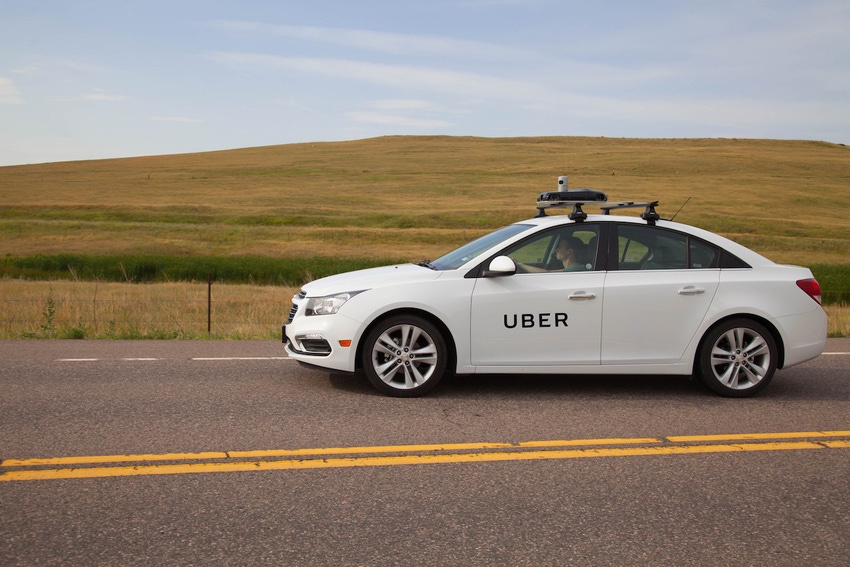Uber is not a company which shares huge insights into its business traditionally, but a filing ahead of a planned IPO has unveiled some very interesting details.
April 12, 2019

Uber is not a company which shares huge insights into its business traditionally, but a filing ahead of a planned IPO has unveiled some very interesting details.
In chasing its long-awaiting debut on the New York Stock Exchange, the curtain has been pulled aside and the cogs laid bare. $11.27 billion in revenue across 2018, 42% growth on 2017, net income of $997 million and 91 million active users around the world. This is a company which will attract some interest from the market, though an adjusted EBITDA loss of $1.85 billion might concern some.
“Building this platform has required a willingness to challenge orthodoxies and reinvent – sometimes even disrupt – ourselves,” said CEO Dara Khosrowshahi. “Over the last decade, as the needs and preferences of our customers have changed, we changed too. Now, we’re becoming different once again; a public company.”
With an IPO comes a lot more information on a company as executives attempt to woo potential shareholders. The S1 form filed with the Securities and Exchange Commission has unveiled some very interesting details.
Starting with the customer base. Uber currently has 91 million active users across 700 cities around the world, though this number also include Uber Eats. This is a 33% increase compared to the previous year as the numbers show increasing momentum over the last three years.
With a presence in 63 countries, Uber estimates it serves roughly 2% of the population across this footprint, clocking up 26 billion miles in journeys across the year. This might sound like a monstrous number, though it is in fact less than 1% of the total, with the team pointing to significant headroom for growth. In fact, Uber estimates the total addressable market is a $5.7 trillion opportunity in 175 countries.
On the R&D front, Uber has been very aggressive, investing $1.5 billion across 2018 in autonomous vehicles, flying cars, which is known as Uber Elevate, and other ‘technology programs’. The autonomous and flying cars portion of the pie was $457 million. Future tech will clearly play a significant role in the future of the business, with some suggesting the firm will not make a profit until autonomous vehicles have been integrated into operations.
At the end of the final quarter of 2018, Uber estimates there are roughly 3.9 million drivers on the platform, earning $78.2 billion since 2015. In 2018, Gross Bookings grew to $49.8 billion, up 45% from $34.4 billion in 2017, while revenues grew 42% to $11.3 billion. Clearly the drivers are the biggest expense of the business, though with autonomous vehicles there will major challenges alongside the profit gain.
“Along the way to a potential future autonomous vehicle world, we believe that there will be a long period of hybrid autonomy, in which autonomous vehicles will be deployed gradually against specific use cases while Drivers continue to serve most consumer demand,” Uber stated in the filing. “As we solve specific autonomous use cases, we will deploy autonomous vehicles against them.
“Such situations may include trips along a standard, well-mapped route in a predictable environment in good weather. In other situations, such as those that involve substantial traffic, complex routes, or unusual weather conditions, we will continue to rely on Drivers.”
The future might be autonomous, but that dream is likely to be a very long-time away. For drivers that might be worried about becoming redundant, there are some glimmers of hope. Autonomous vehicles will take a long-time to be accepted across the mass market, some customers will refuse to use them in the first instance, while certain situations will continue to demand human intervention; the technology simply isn’t there yet.
While there are rumours about the total valuation of the company, some are suggesting a $100 billion target while others point closer to $120 billion, Uber executives are remaining quiet.
About the Author(s)
You May Also Like








.png?width=300&auto=webp&quality=80&disable=upscale)


_1.jpg?width=300&auto=webp&quality=80&disable=upscale)


.png?width=800&auto=webp&quality=80&disable=upscale)